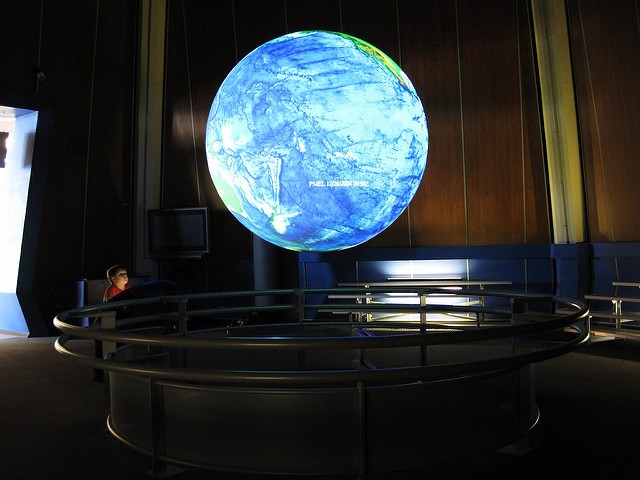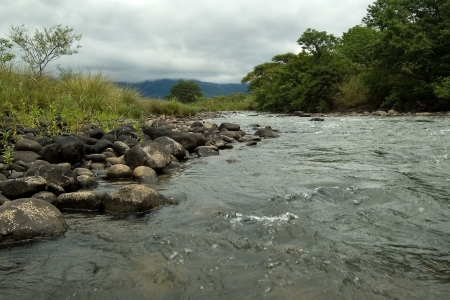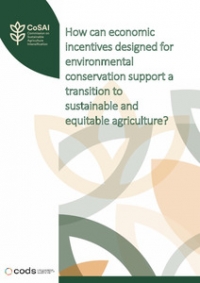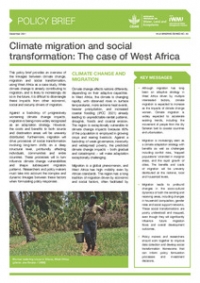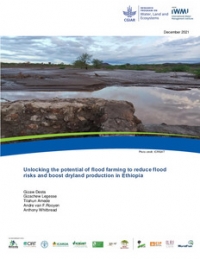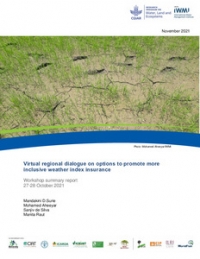New science provides evidence of the need to strengthen small holders’ resilience strategies than trying to predict future climate scenarios.
What do we all know about climate change? Beyond the fact that the world is warming, one of the great hand-me-down messages of recent years has been that wet areas are getting wetter and dry areas drier – and the trend is bound to worsen. So what are we to make of a new study, published in the journal Nature this month, saying that this is all wrong?
Are modellers getting it wrong?
Climate in the 20th century did not, as most climate models predicted, get more extreme, with more droughts and worsening rainstorms. In fact, "several other centuries in the past 1200 years show stronger and more widespread extremes," says Frederik Ljungqvist, a climate historian at Stockholm University and one of the authors of the international study. "Climate models strongly overestimate the intensification of wet and dry extremes in the 20th century."
If wet areas did not get wetter and dry areas drier in the 20th century, he says, we cannot presume that this will happen in the 21st century.
This comes as a surprise to climatologists who thought they could see the signs of more extreme weather everywhere, from Africa to Australia and California to the Middle East. And the findings are being contested (examples here and here).
But they do confirm work published three years ago arguing that the statistical underpinning of this claim, the Palmer drought index, was methodologically flawed and did not, as widely claimed, show more droughts in the late 20th century.
Less prediction, more resilience thinking
So where does this leave us? And in particular where does it leave smallholder farmers and others who depend intimately on the weather for their survival?
It does not – repeat not – undermine the basic tenets of climate change science. The warming of the planet is observable and pretty much inevitable, given the basic physics of greenhouse gases. But it does underline that we may have overestimated our ability to predict how climate change will play out in real weather, and especially on the critical issue of climate extremes.
For years, governments have pushed climate scientists to deliver ever more "accurate" predictions of future climate, and what that will mean for farmers and others. And scientists have done their best to oblige. But the detail is becoming, if anything, fuzzier.
The more we know, it seems, the less we know for sure. The idea that we can predict climate change with precision and then find ways of adapting to it looks increasingly far-fetched.
Much better – as the most recent scientific assessments from the IPCC tried hard to articulate – is to foster resilience: to help farmers and others hedge their bets and be prepared for whatever climate change may throw at them.
Besides Ljungqvist's shocking discovery about the fragile forecasting capabilities of current climate models, a flurry of the research published in recent weeks has underlined how little we know for sure either about climate change and its impacts on agriculture.
Take this. American researchers, writing in Nature Climate Change last month, called into question the widely held idea that the grassland interiors of continents like North America will dry out in the 21st century, turning pastures and other arid zones to deserts.
A more likely scenario, says author Koen Hufkens of Harvard, is that the prairies will see "widespread and consistent increases in vegetation." This could happen even if there was less rainfall overall.
He argues that earlier springs and later autumns will deliver more growth in grasses and other vegetation, and that this will more than counteract any decline during hotter, drier summers. A growing season five weeks longer would deliver a fifth more grass.
That finding should extend to other continents, at least outside the tropics, and is potentially great news for herders everywhere. The same effect might help many crops, too.
The beneficial effects of a longer growing season also lay behind some good news for farmers contained in a second recent paper in the same journal. Avery Cohn of Tufts University pointed out last month that simple models converting climate change into forecasts of crop yields could be a poor proxy for actual impacts on farm output.
The study found that while conventional yield models suggested lower production in the Mato Grosso region of Brazil for soya, this conclusion was flawed. It ignored the fact that a longer growing season made a second crop much more likely, overall increasing likely overall output.
Of course, the same optimistic conclusion might not work for smallholder crops, of course. But then again, it might.
Improving upon the hand dealt
A third paper, published in February by an international team of agricultural researchers, is not directly about climate change, but offers intriguing evidence about the best way for farming communities in arid lands to cope with worsening conditions.
Ulrik Ilstedt of the Swedish University of Agricultural Science blasted a hole in the agronomists' nostrum that, in arid areas, trees soak up water from soils and damage the viability of crops. Far from it, he concluded. While dense forests might sometimes have this effect, "intermediate tree cover can maximize groundwater recharge in seasonally dry tropics".
This work, based on groundwater budget modelling, confirms practical work in Burkina Faso, Niger and elsewhere that has found tree planting on farms conserves water, boosts yields and reduces soil erosion. And it offers a potentially big boost for advocates of agroforestry as a response to worsening aridity.
None of this recent research says that the crashes in crop output predicted for the arid and semi-arid developing world, in Africa and elsewhere, won't happen. They might. But it certainly suggests that the implications of climate change are much more complicated and nuanced than headline writers or policymakers might suppose.
It suggests that planners should abandon the hope that they can "predict and adapt" to climate change. Rather, they should concentrate on increasing resilience to the unpredictability of future climate and its impact on crops and farming systems.
Resilience is the key -- resilience to whatever might show up. The good news is that traditionally farmers, especially poor subsistence farmers, have all along been far more attuned to that than modern agronomists. If anyone has a practical solution to handling the vicissitudes of climate change, it could be them.



